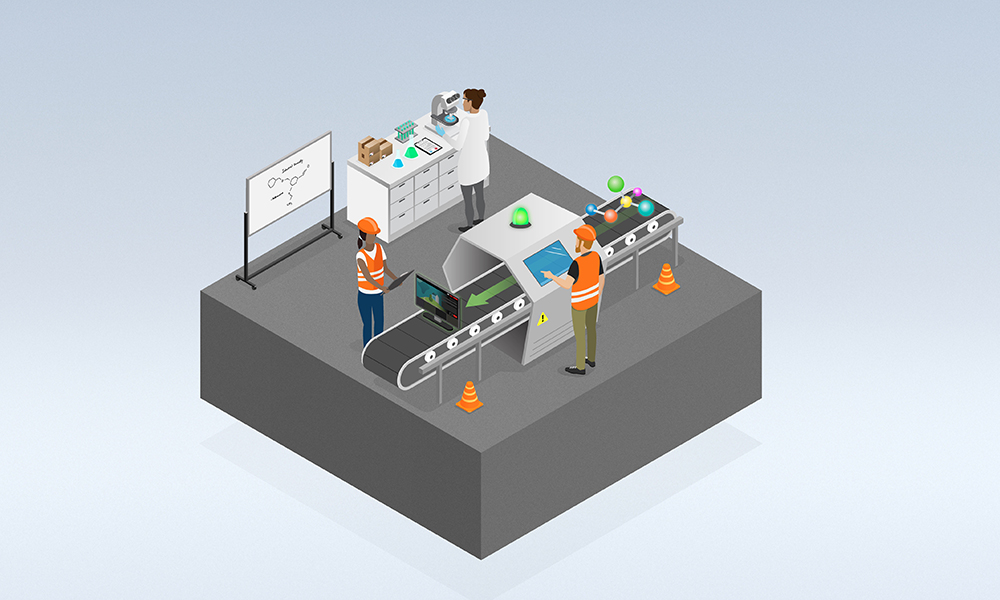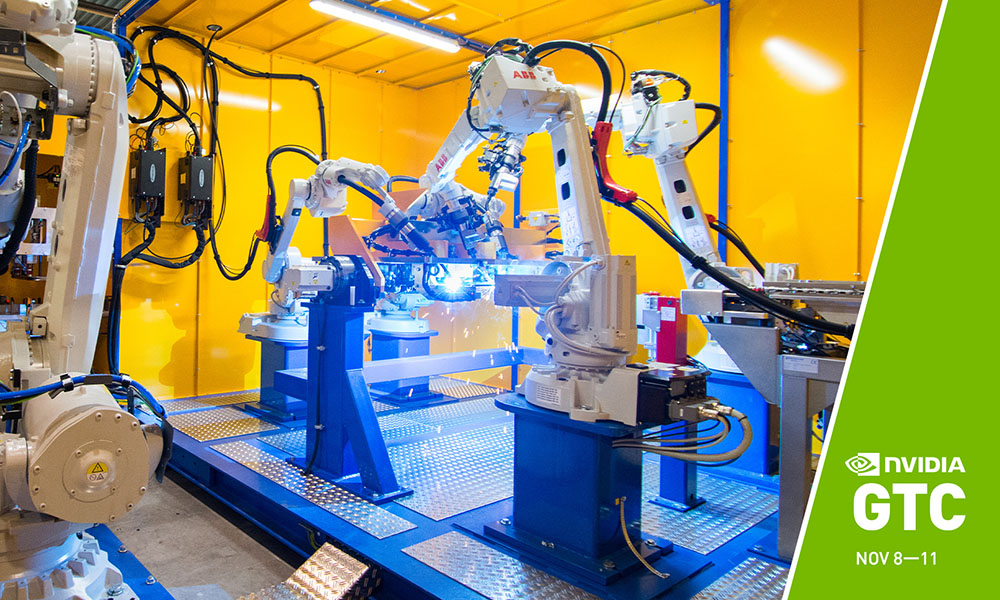In an earlier blog post, we introduced NVIDIA NV-Tesseract, a family of models designed to tackle diverse time-series tasks—such as anomaly detection, classification, and forecasting—within a single framework. This work laid the foundation for adapting a general-purpose backbone across industries where data is constantly evolving.
In semiconductor manufacturing, the challenge is especially stark. Each wafer undergoes hundreds of precision steps, generating massive streams of sensor data, including chamber pressures, gas flows, RF power levels, and vibrations. Traditional monitoring relies on fixed thresholds and statistical process control (SPC). Alarms tend to be statistical and reactive, requiring constant recalibration as processes drift. Subtle faults or context-dependent anomalies can slip past these safeguards, and production may continue without interruption. One missed anomaly can cascade into yield losses worth millions of dollars.
This is where NV-Tesseract, delivered as an NVIDIA NIM microservice, proves its value. The model identifies the precise moment in a time series when an anomaly occurs, across single signals and multiple correlated sensors. This level of granularity is critical: factory facilities (fabs) can determine exactly from which point forward wafers may be faulty, take corrective action immediately, and prevent losses from cascading downstream.
By shifting from after-the-fact inspection to real-time anomaly localization, NV-Tesseract transforms raw sensor noise into actionable insights—protecting yield, reducing costs, and laying the groundwork for more intelligent automation at fab scale.
What fab data looks like
Semiconductor manufacturing is one of the most data-intensive industrial environments globally. Each wafer moves through hundreds of tightly controlled steps, with every tool streaming data from dozens—sometimes hundreds—of sensors. The result isn’t just large volumes of data, but interdependent signals that must be analyzed together. A deviation in one sensor may seem insignificant on its own, but when combined with others, it can signal the start of a serious fault—making cohesive, multivariate analysis essential.
- Level shifts: A sensor may suddenly shift to a higher or lower baseline, often indicating a calibration change or the start of tool drift.
- Spikes and fluctuations: Brief, erratic bursts of abnormal readings can indicate instability in plasma sources or gas flow valves. Left unchecked, these short-lived spikes can ruin an entire wafer batch.
- Sensor failures: At times, a sensor goes flat, reporting zeros or locked values that clearly diverge from reality. These “silent failures” are especially hazardous because they conceal the actual state of the process.
- Scale shifts: In other cases, sensor output suddenly jumps into an entirely different magnitude range, often due to misconfiguration or early hardware failure.
Lessons from dataset evaluations
Testing NV-Tesseract on fab datasets highlighted one insight above all: anomaly localization matters as much as anomaly detection. Traditional SPC charts and tool alarms can raise flags, but they rarely show exactly when a process has gone off track. The lack of precision forces fabs to scrap larger lots than necessary or perform costly re-inspections.
NV-Tesseract changes the equation, identifying the precise timestamp at which an anomaly begins. The model provides fabs with a clear decision point: wafers processed before that moment can often be saved, while those after require closer scrutiny. This granularity changes anomaly detection from a blunt “something went wrong” signal into a practical tool for managing yield.
The impact is twofold. First, it reduces waste by limiting the amount of product that needs to be discarded. Second, it enables corrective action in near-real time, keeping equipment online, preventing defects from propagating downstream, and protecting both yield and cost efficiency.
In short, NV-Tesseract doesn’t replace fab alarms. It complements them with the contextual intelligence needed to act decisively at the scale of modern manufacturing.
Deploying NV-Tesseract with NVIDIA NIM
Building advanced anomaly detection models is only half the battle in semiconductor manufacturing. To make them useful, fabs need a way to deploy, scale, and integrate them into production monitoring systems without weeks of engineering effort. This is where NVIDIA NIM comes in.
NVIDIA NIM, part of NVIDIA AI Enterprise, is a set of easy-to-use microservices designed for secure, reliable deployment of high-performance AI model inferencing across workstations, data centers, and the cloud. Supporting a wide range of AI models, including open-source community and NVIDIA AI Foundation models, NVIDIA NIM ensures seamless, scalable AI inferencing, on-premises or in the cloud, using industry-standard APIs.
NIM enables containerized deployment in minutes from the NVIDIA NGC Catalog, runs consistently across on-premises, cloud, and edge environments, and scales to hundreds of microservices with orchestration frameworks such as Kubernetes and Slurm. It also includes built-in health checks, monitoring, and security, with continuous validation, maintenance, and enterprise support from NVIDIA to meet performance and reliability requirements.
By delivering NV-Tesseract as a NIM, fabs can move directly from research prototypes to scalable production deployments without custom packaging or brittle integration work.

Deployment workflow
A single-node install using Docker is intentionally simple:
docker pull nvcr.io/nim/nvidia/nv-tesseract:<version-number>
docker run --gpus all -it --rm -p 8000:8000 \
-e NGC_API_KEY=<YOUR_KEY> \
-v /local/data:/workspace/data \
nvcr.io/nim/nvidia/nv-tesseract:<version-number>
curl http://localhost:8000/v1/health/ready
curl -X POST http://localhost:8000/detect-anomalies \
-H "Content-Type: application/json" \
-d @sample_timeseries.json
Input and output can be CSV or JSON time-series data, and the output includes timestamps/time series, sensor values, anomaly scores, metadata, and supporting diagnostics in the same formats.
Example JSON payloads input format
The service accepts a multivariate time series as JSON or CSV.
Each element is an object with:
ts: timestamp (string in ISO-8601 format, e.g. “2025-09-05T14:33:52Z”)value: numeric sensor reading (float)
[
{"ts": "2025-09-05T14:33:52Z", "value": 2.31},
{"ts": "2025-09-05T14:34:52Z", "value": 11.2},
{"ts": "2025-09-05T14:35:52Z", "value": 450.0},
{"ts": "2025-09-05T14:36:52Z", "value": 4531.9}
]Example JSON payloads output format
The service returns a JSON or CSV array of the same length.
Each element includes:
ts: timestamp (epoch seconds)value: numeric sensor reading (float)Anomaly: integer flag (0 = normal, 1 = anomaly)
[
{"ts": 1730855632, "value": 2.31, "Anomaly": 0},
{"ts": 1730855692, "value": 11.2, "Anomaly": 0},
{"ts": 1730855752, "value": 450.0, "Anomaly": 0},
{"ts": 1730855812, "value": 4531.9, "Anomaly": 1}
]From noisy signals to actionable insights
Semiconductor fabs generate torrents of sensor data—pressures, flows, temperatures, and vibrations—each capable of signaling trouble. For decades, engineers have relied on fixed thresholds and hand-tuned rules. However, these approaches collapse when faced with the noise, drift, and scale of modern chipmaking.
The roadmap for NV-Tesseract in NIM includes:
- Fine-tuning on fab-specific data. Enabling the model to adapt its anomaly definitions to individual tools, recipes, or production lines.
- Hyperparameter tuning. Exposing knobs for precision vs. recall trade-offs so fabs can dial in detection sensitivity to match their operational needs.
By integrating these advances through NIM, they won’t remain locked in research code. They’ll be packaged, deployed, and scaled across fleets of tools for:
- Protecting wafer yield – Subtle deviations in plasma intensity, gas flow, or temperature can scrap entire wafer lots. By surfacing anomalies earlier, fabs can pause, adjust, or repair before yield is lost.
- Reducing downtime – Sensor failures or calibration drifts that once went unnoticed for hours can be detected immediately, preventing extended outages or cascading tool failures.
- Improving engineer trust – False alarms erode confidence; missed anomalies damage operations. NV-Tesseract’s ability to reduce noise while highlighting real events builds trust in automated monitoring.
- Scaling intelligence – Instead of custom solutions for each tool or process, fabs can roll out a unified anomaly detection capability across hundreds of machines with minimal friction, speeding adoption while reducing integration overhead.
Get started
Semiconductor fabs face some of the toughest data challenges in the industry, but with NV-Tesseract and NIM, advanced anomaly detection can move from research to production in a matter of hours.
You can request early access to the NV-Tesseract NIM and run it directly in your environment—on-premises, in the cloud, or at the edge. The containerized service makes it simple to test with your own sensor data and see how NV-Tesseract surfaces the anomalies that matter most.
Contact the NVIDIA DGX Cloud team to request early access to the NV-Tesseract NIM, schedule a demo, discuss your time-series requirements, and explore how NV-Tesseract NIM can become a cornerstone of your semiconductor anomaly detection workflow.









